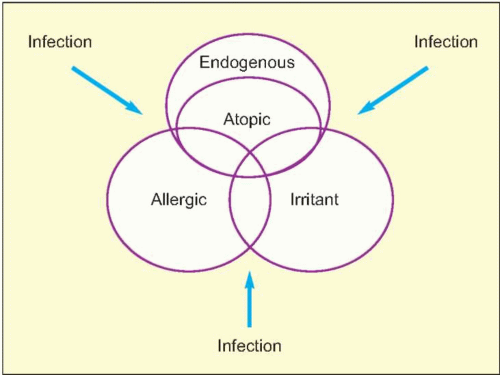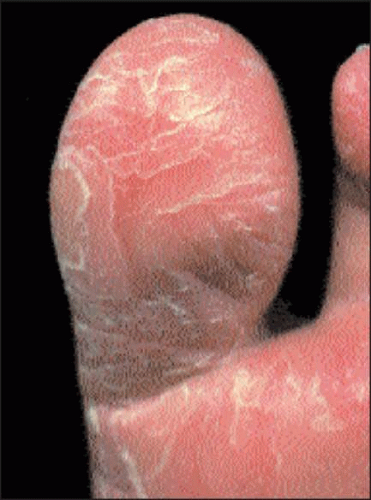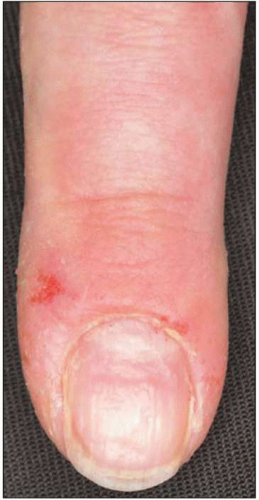Hand and foot dermatoses
John SC English MRCP
Introduction
The commonest dermatosis of the hands and feet is dermatitis or eczema (the two terms are synonymous), but other inflammatory conditions must be differentiated (Table 5.1). As with all other parts of the skin the distribution, configuration, and morphology of the rash are helpful pointers in making a diagnosis. Is the rash all over the hands or feet, or just on one? Are the lesions confluent or discrete and what is the morphology of the lesions? Are there vesicles, dryness, cracking, and hyperkeratosis? Looking for signs of skin disease elsewhere is useful especially in establishing a diagnosis of psoriasis. It could be that the patient has a chronic fungal infection of the hands and then they are likely to have fungal infection of their feet. The feet should always be examined in conjunction with the hands.
Table 5.1 Conditions affecting the hands and feet | ||||||
|---|---|---|---|---|---|---|
|
Hand and foot dermatitis
Introduction
The patterns of hand dermatitis can be divided into four groups (Table 5.2). Dermatitis predominantly affects the backs of the hands, the fingers, the palms, or the whole hand. Hand eczema can be divided into either allergic, irritant, or endogenous, or a mixture of all three (5.1).
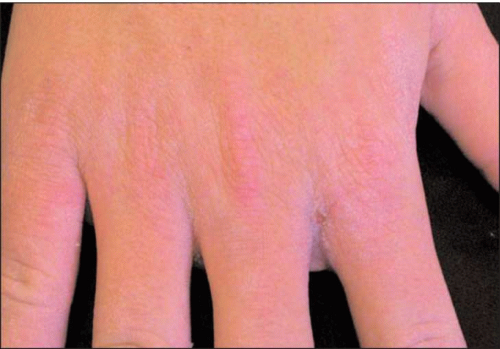 5.2 ICD affecting the finger webs and back of the hand. |
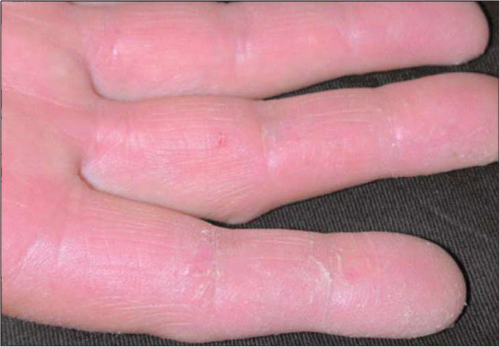 5.3 ICD of the palmar aspect of the fingers. |
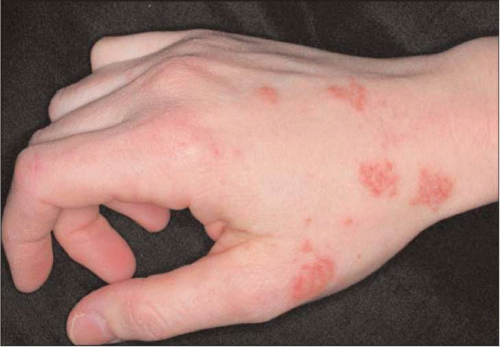 5.4 ICD discoid pattern affecting the back of the hand. |
Clinical presentation
Irritant contact dermatitis (ICD)
Irritant dermatitis of the hands tends to affect the finger webs and the backs of the hands, but can affect the palmar surface (5.2, 5.3 and 5.4). It is due to a direct toxic effect of exposure to irritant substances. The commonest causes are soaps, detergents, solvents, and occlusive effect of rubber gloves. Almost any chemical given enough exposure can be irritant, even water. Friction can also play a role in causing dermatitis. It is much more common than allergic contact dermatitis (ACD). ICD is not so common on the feet, as shoes are worn and this tends to cause occlusion and sweating. Juvenile plantar dermatosis of the feet is probably an irritant effect of drying out of sweaty feet after wearing occlusive trainers (5.5).
Allergic contact dermatitis
The pattern of ACD is variable; predominantly vesicles will usually be present, especially on the palmar surface, and any part of the hand can be affected (5.6, 5.7 and 5.8, 5.9 and 5.10). ACD of the feet can affect the dorsal or plantar surface. The dorsal surfaces are often associated with leather allergy and the plantar surface with rubber allergy, due to the fact that leather on the insoles of shoes tends to be vegetable tanned and not chromium tanned, and the soles usually tend to be made of rubber (5.11, 5.12 and 5.13). However, patients can be allergic to the glues, which often can contain rubber and therefore may get a pattern that can affect any part of the foot (5.12). However, even with careful examination of the hands and feet it is frequently not possible to tell whether sensitization has occurred (5.14) and therefore patch testing is strongly recommended (see Chapter 1).
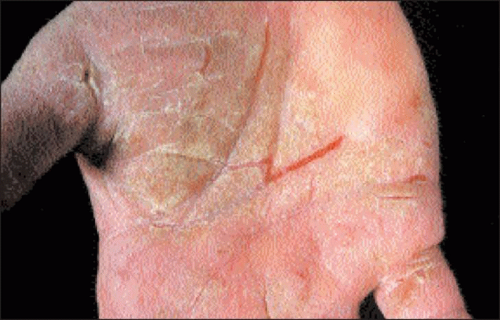 5.6 ACD from isopropyl phenyl phenylenediamine in bicycle tyres. |
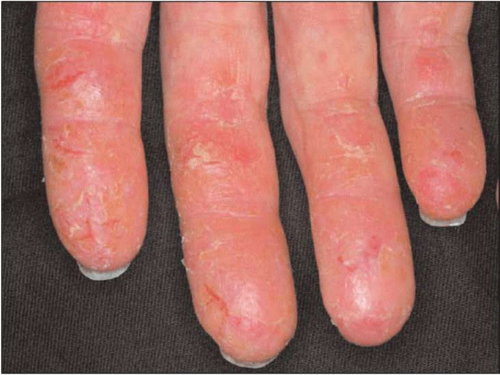 5.7 ACD from epoxy resin paint. |
